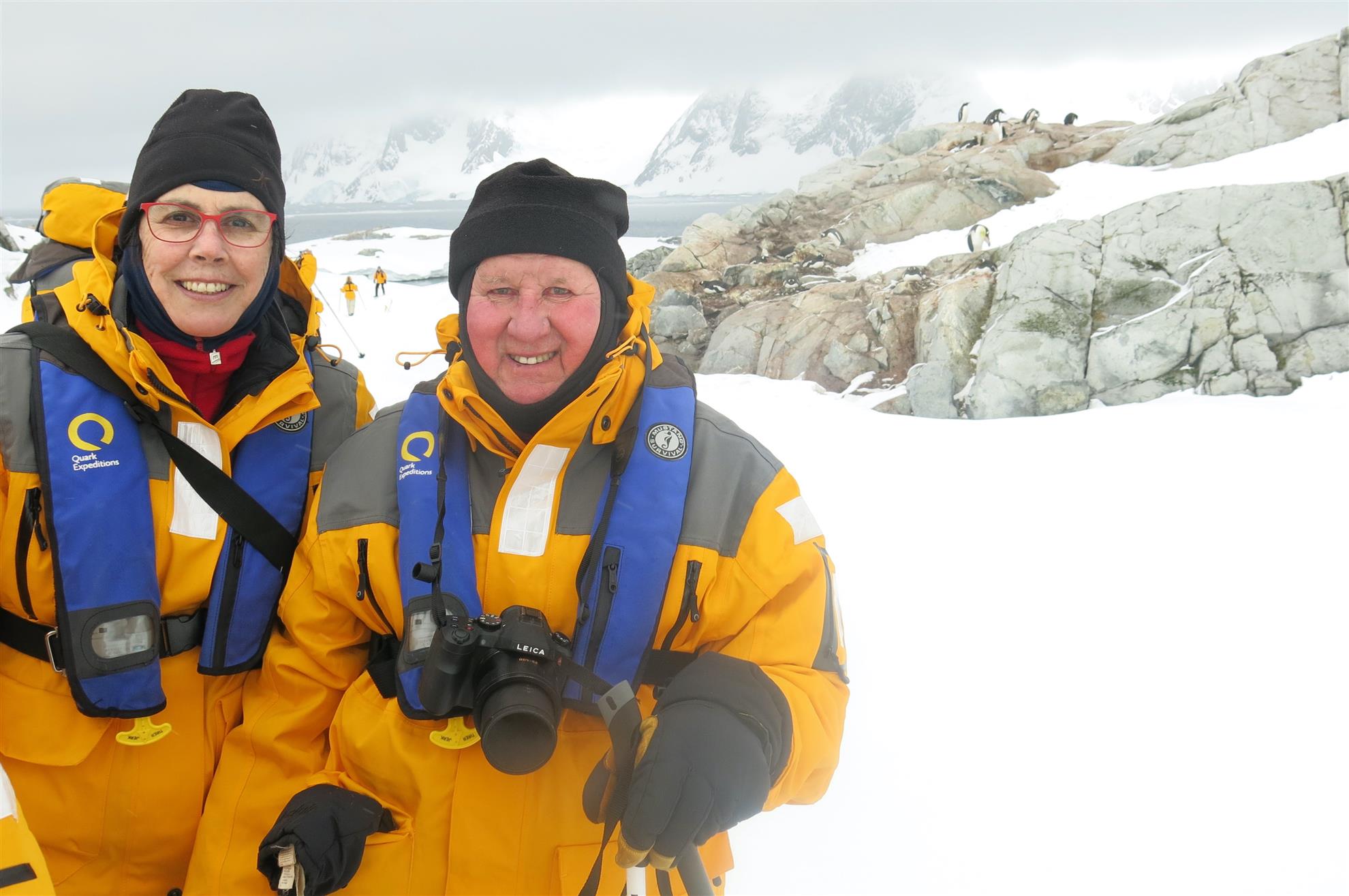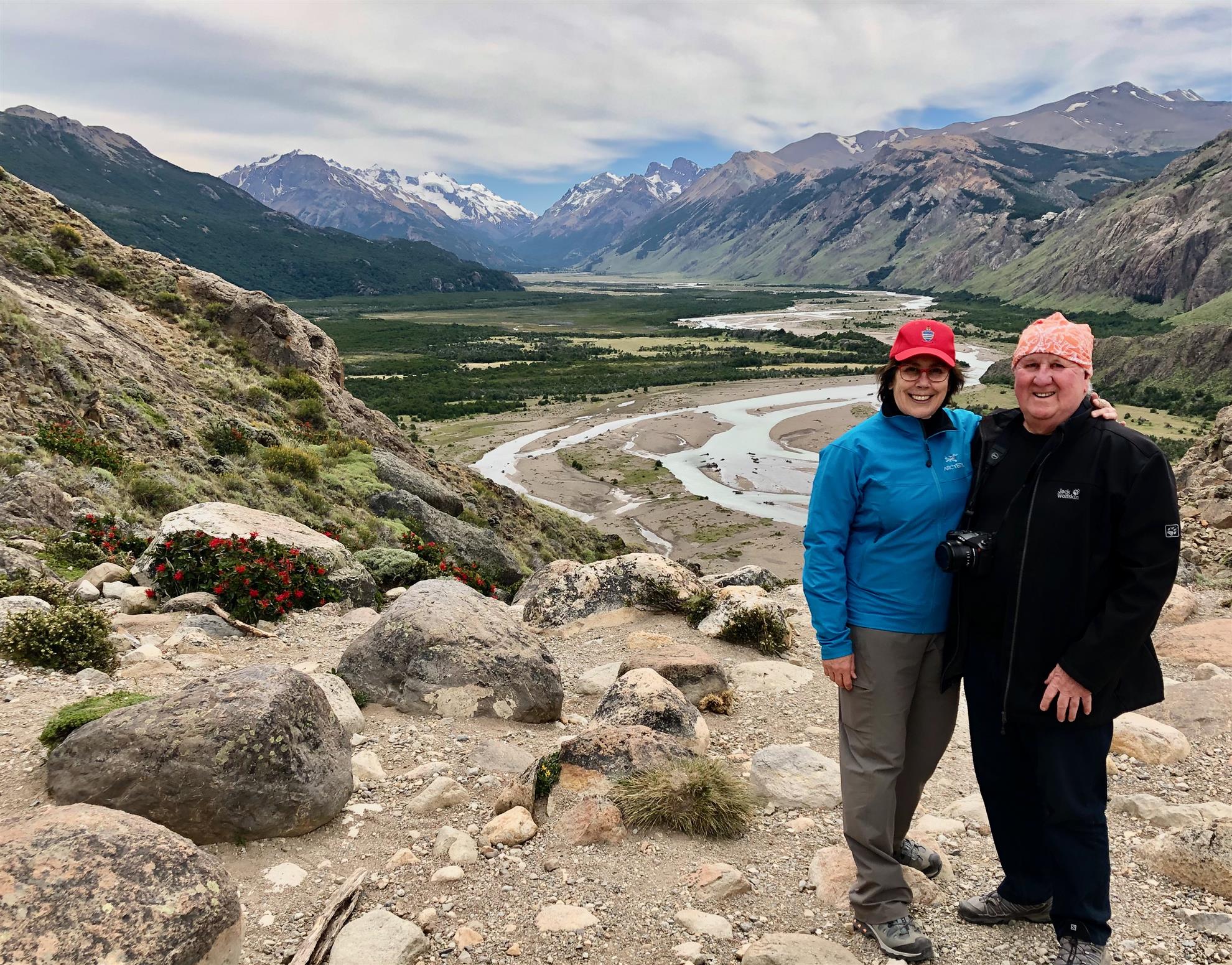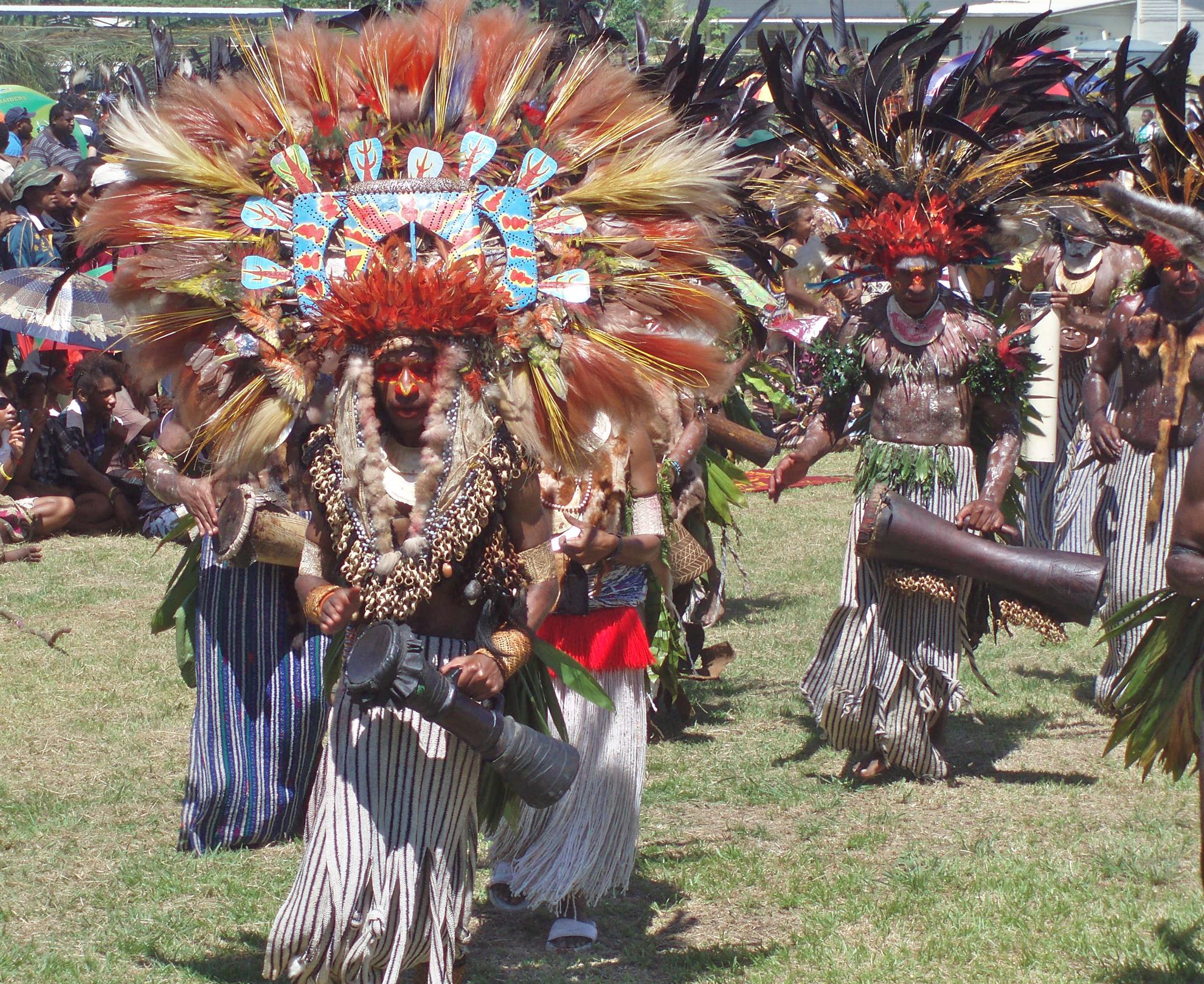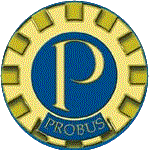
New member Jill de Araugo admits her Portuguese name is unpronounceable unless you’ve mastered the nation’s gutturals so she’s ok with being called “de Rouge”. Her ancestors were vignerons in the Azores Islands in the mid-Atlantic, declared Portuguese territory in the era of super-powers Spain and Portugal ruling the waves. Eventually an ancestor Francisco Batalia de Araugo migrated to Victoria in the gold rush and started vineyards near Bendigo which were closed by the phylloxera virus at the end of the nineteenth century. She met hubby Neil on staff at Yarra Valley Grammar in the 1980s. “His own distinctive name, Béchervaise, is from his ancestors on the Channel Islands, who were either pirates or privateers depending on who the winning side was.
Picture above: the couple at Petermann Island in Antarctic in December 2018
Picture above: the couple at Petermann Island in Antarctic in December 2018

Picture: on a walk out of the village of El Chalten in Argentina
Jill grew up in the Melbourne suburb of Burwood (now part of Glen Iris) and after an honors degree in chemistry from Monash University started as a chem/physics/maths teacher at Bright High School. “I was a keen skier and I was being paid to go skiing every week,” she says. Neil took up skiing “as the only way to stay married to me,” she says grimly.
Jill served on the Council of the Science Teachers’ Association of Victoria for many years. After study on curriculum design at Melbourne University, at Ivanhoe Girls’ Grammar she embarked on a 20 year journey as a school deputy principal and principal. She started a doctorate at Monash in the mid-1990s on how school leaders’ understanding of their role evolves over time. When her next deputy role took her to Kambala Church of England Girls School, Sydney, she transferred her studies to Sydney University. The school also gave her some exercise “as it was half-way up Sydney’s heartbreak hill,” she says. The doctorate took her seven years including several years of deferrals. She’s never regretted the hard slog. “It gave me some powerful learning before I moved on to being a school principal myself,” she says. The project involved following three groups of five leaders over time: early appointees, those with 7-10 years’ experience and those with 20 years or so. “They were all really generous with the time I took interviewing them,” she says.
Her jobs as principal were at Mentone Girls’ Grammar and Chilton Saint James School in Wellington, New Zealand. She came back to Australia in 2011 to be on hand for her elderly mother and became Executive Officer at the Royal Society of Victoria, working out of their heritage listed old building at 9 Victoria Parade. “For a society of just a couple of hundred boffins, that’s quite an asset,” we remarked. “No,” she says. “The Crown owns the land and the Society owns the building which is very costly to maintain. Responsibility is with the four trustees who include Alan Finkel, Australia’s Chief Scientist.”
It was open to the public during her three year tenure, creating an unusual situation where as sole occupant at times she didn’t always feel safe from visitors. “I had Triple 0 on my speed dial, and also the number of the caretaker who lived in an adjacent cottage. He was good at coming over and gently ushering undesirables out. Now the building’s shut to the public.” Each State has its Royal Society but unlike the UK model, they don’t do science, only promote science. All the societies are now over-shadowed by the well-resourced Academy of Science in Canberra.
She next led and managed from 2015-18 a venture for professional certification of school principals, via the Principals Australia Institute. It’s since come under the auspices of the Australian Council for Education Research (ACER), and gives leading principals peer recognition. “There’s nothing else like it in the world,” she says. “It’s very difficult to objectively measure and certify principals’ leadership.” She has stepped back this year to part-time and sooner or later will join Neil in retirement.
Neil’s own PhD was on early childhood reading and literacy. “He was a Sputnik kid, in other words he was heading towards English, Latin and History but switched to science to keep the Russians at bay. Although married, we didn’t live together for the first five years because he was working at James Cook in Queensland and then Sydney University.”
Among their unusual trips was back and forth to the Divine Word University in Madang, PNG in 2012-13, where they were consulting on policy development, management and the ethical conduct of human research. That generated some pics of colorful locals you can see here. (insert). “Safe arrival you don’t take for granted,” she says. “The clouds have got a lot of mountains in them.”
Jill served on the Council of the Science Teachers’ Association of Victoria for many years. After study on curriculum design at Melbourne University, at Ivanhoe Girls’ Grammar she embarked on a 20 year journey as a school deputy principal and principal. She started a doctorate at Monash in the mid-1990s on how school leaders’ understanding of their role evolves over time. When her next deputy role took her to Kambala Church of England Girls School, Sydney, she transferred her studies to Sydney University. The school also gave her some exercise “as it was half-way up Sydney’s heartbreak hill,” she says. The doctorate took her seven years including several years of deferrals. She’s never regretted the hard slog. “It gave me some powerful learning before I moved on to being a school principal myself,” she says. The project involved following three groups of five leaders over time: early appointees, those with 7-10 years’ experience and those with 20 years or so. “They were all really generous with the time I took interviewing them,” she says.
Her jobs as principal were at Mentone Girls’ Grammar and Chilton Saint James School in Wellington, New Zealand. She came back to Australia in 2011 to be on hand for her elderly mother and became Executive Officer at the Royal Society of Victoria, working out of their heritage listed old building at 9 Victoria Parade. “For a society of just a couple of hundred boffins, that’s quite an asset,” we remarked. “No,” she says. “The Crown owns the land and the Society owns the building which is very costly to maintain. Responsibility is with the four trustees who include Alan Finkel, Australia’s Chief Scientist.”
It was open to the public during her three year tenure, creating an unusual situation where as sole occupant at times she didn’t always feel safe from visitors. “I had Triple 0 on my speed dial, and also the number of the caretaker who lived in an adjacent cottage. He was good at coming over and gently ushering undesirables out. Now the building’s shut to the public.” Each State has its Royal Society but unlike the UK model, they don’t do science, only promote science. All the societies are now over-shadowed by the well-resourced Academy of Science in Canberra.
She next led and managed from 2015-18 a venture for professional certification of school principals, via the Principals Australia Institute. It’s since come under the auspices of the Australian Council for Education Research (ACER), and gives leading principals peer recognition. “There’s nothing else like it in the world,” she says. “It’s very difficult to objectively measure and certify principals’ leadership.” She has stepped back this year to part-time and sooner or later will join Neil in retirement.
Neil’s own PhD was on early childhood reading and literacy. “He was a Sputnik kid, in other words he was heading towards English, Latin and History but switched to science to keep the Russians at bay. Although married, we didn’t live together for the first five years because he was working at James Cook in Queensland and then Sydney University.”
Among their unusual trips was back and forth to the Divine Word University in Madang, PNG in 2012-13, where they were consulting on policy development, management and the ethical conduct of human research. That generated some pics of colorful locals you can see here. (insert). “Safe arrival you don’t take for granted,” she says. “The clouds have got a lot of mountains in them.”

Apart from skiing she loves travel and like all of us, saw some great scheduled trips squelched by the lockdown, especially to Zambia for a safari. Their best-ever trip was to Antarctica in 2018, with setting off from the port of Ushuaia in Argentina, the southernmost ton in the world. “What made the trip extra-special was our side trips to the Atacama Desert and the mountains of Torres del Paine and El Chalten in Patagonia. If you go to a place like the Taj Mahal you already know a lot about how it looks, but for these other places we had no expectations and were gobsmacked at the natural beauty,” she says.
